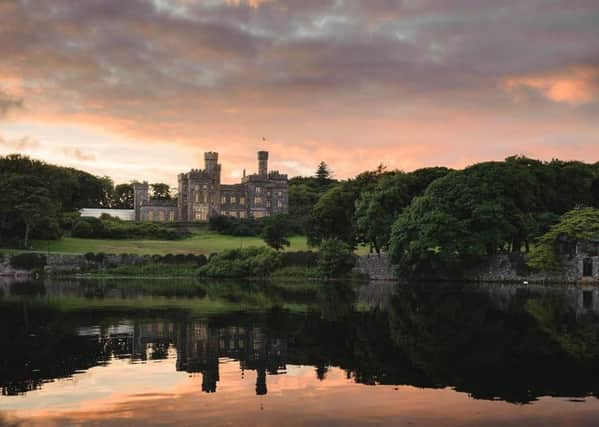Brian Ferguson: Lews Castle restoration could be a model for the rest of Scotland


That was the experience lying in wait when I finally got the opportunity to explore one of the iconic landmarks in the Outer Hebrides – nearly two decades after first setting eyes on it. It is almost impossible to arrive by ferry in Stornoway, on the Isle of Lewis, or walk around its harbour without your attention being drawn to the imposing Victorian building overlooking the town.
Built as a country house for the opium baron Sir James Matheson, Lews Castle would go on to become a naval hospital and a college before falling into serious decline in the mid-1990s and closing its doors. Bringing the A-listed building back into use has been a long and difficult process, but after a five-year restoration and expansion, recently unveiled by the First Minister, the new-look castle can finally be seen in its 21st century incarnation.
Advertisement
Hide AdAdvertisement
Hide AdThe most notable new addition is the creation of a visitor attraction and archive in collaboration with the National Museum of Scotland on the site of its former glasshouses.
It has become the permanent home of six of the world’s most famous chess pieces, discovered on the island in 1831, along with other historic artefacts like some of the whisky bottles on board the SS Politician when it ran aground off the coast of Eriskay in 1941. Intriguingly, the museum seems to be as much about reflecting modern-day working life and the culture in the islands as the past.
That is why my friends popped up in a montage of images of the Hebridean Celtic Festival, the internationally-renowned event staged in the castle grounds each July, which has brought many first-time visitors to Lewis and provided a crucial platform for traditional culture.
The castle development, which has brought on board the leisure operator Natural Retreats, the company which has completely transformed the old John O’Groats Hotel, has delivered so much more than a museum, with the creation of a new bar, cafe and shop, as well as much-needed luxury holiday accommodation and various ground-floor rooms suitable for anything from weddings and private dining to conferences.
It does not take a great leap of the imagination to foresee Lews Castle playing host to awards ceremonies, fashion shows, concert recitals and even film and TV productions - especially with Stornoway’s direct air links to Edinburgh, Glasgow and Inverness. It will take time to really take off and word to spread, but there is clearly huge potential for it to become a beacon of Scottish, Hebridean and Gaelic culture.
The Lews Castle overhaul reminded me of the £12 million restoration and expansion of Abbotsford House, Sir Walter Scott’s home in the Borders.
In a week that saw the old Leith Theatre building and the former Royal High School in Edinburgh reopened to host major events, and a former printworks in Dundee host the city’s international design festival, the Stornoway project also prompted thinking about how many under-used heritage assets there are dotted around the country.
The National Trust for Scotland has already embarked on work to properly realise the potential of Brodick Castle, on the Isle of Arran, and Culzean Castle, on the Ayrshire coast. Extra visitor facilities are also promised by the new owners of the former Carbisdale Castle Youth Hostel in Sutherland, which is undergoing a multi-million pound overhaul.
Advertisement
Hide AdAdvertisement
Hide AdThere are industry ambitions to grow the value of Scottish tourism by £1 billion by 2020 and huge parts of the country are already seeing a boom in visitors thanks to the North Coast 500 campaign.
Now is the time to have a proper nationwide audit of the historic sites that need care and attention, and could become the focus of the next round of game-changing restorations.